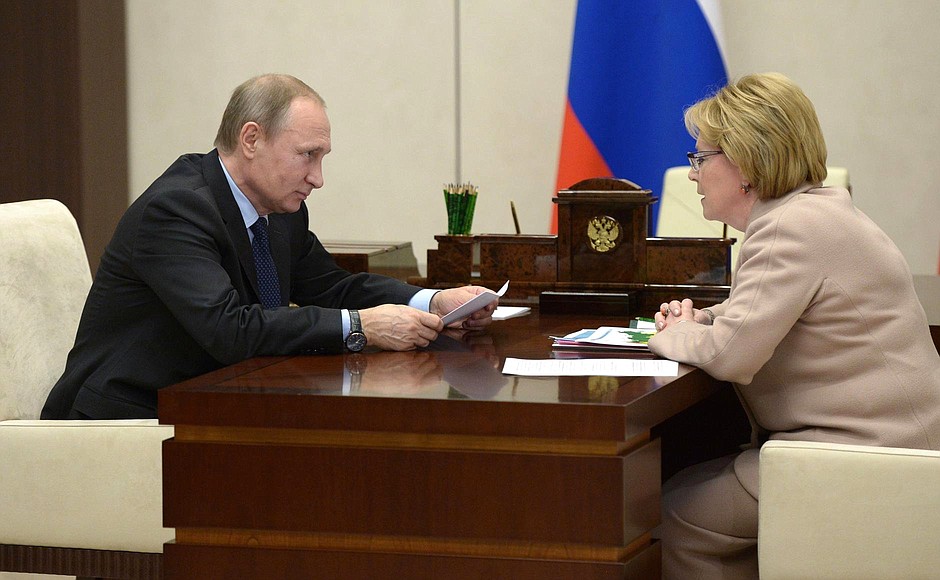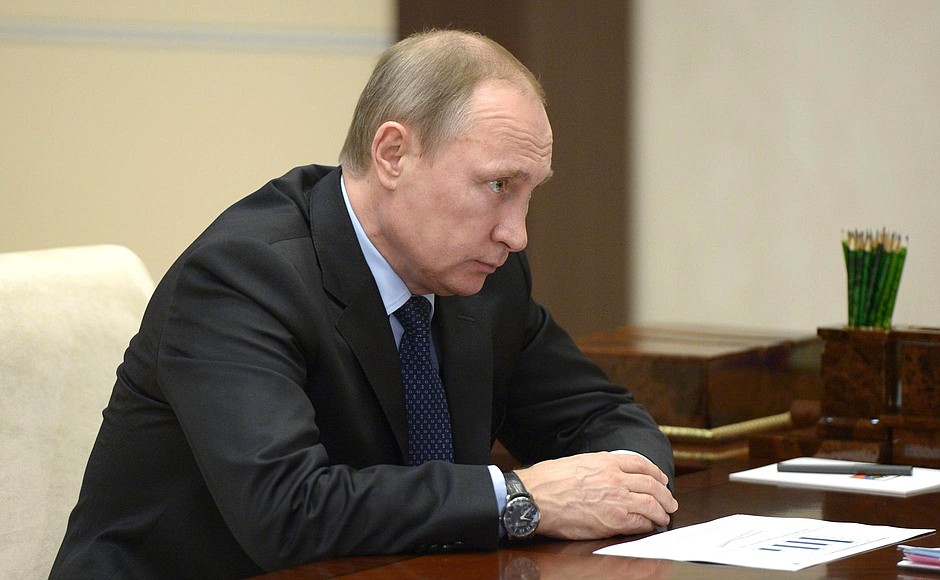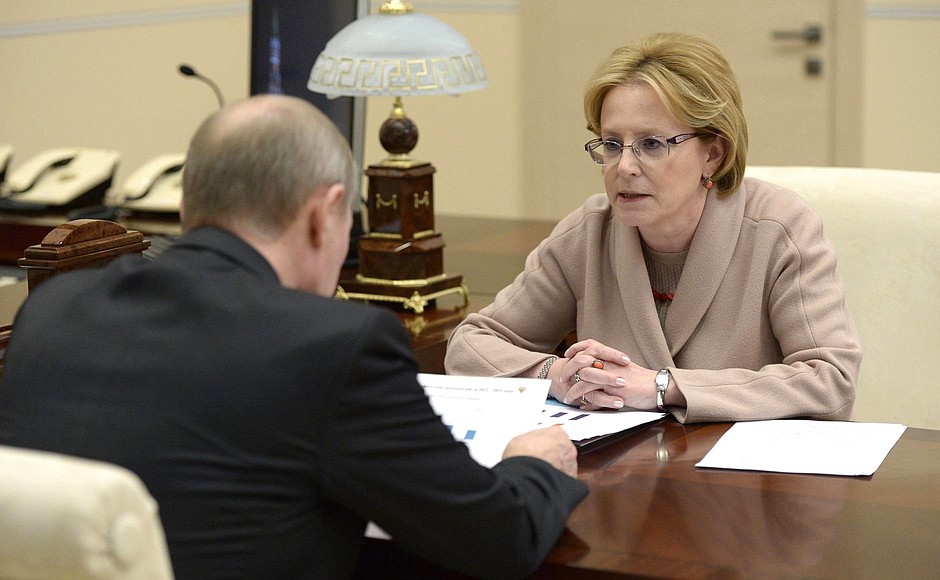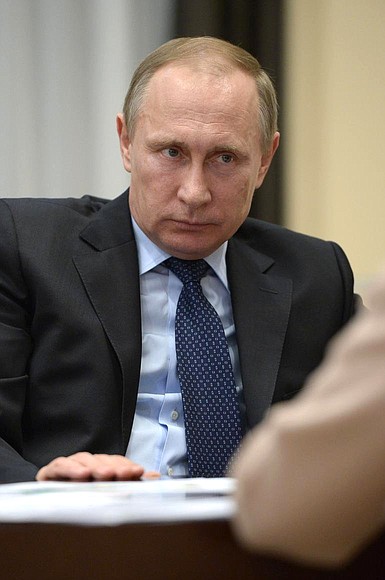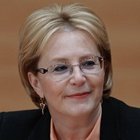President of Russia Vladimir Putin: Ms Skvortsova, we agreed that you will tell me about the current situation, the year-end results and the results of work in the first quarter – the last two months.
Healthcare Minister Veronika Skvortsova: Thank you, Mr President.
Today, we can draw some preliminary conclusions on 2015, based on the results from those 12 months, as well as this January.
I would like to note that in spite of the certain financial and economic fluctuations, we were able to maintain the positive trends we have been seeing over the course of the previous several years.
A very important, positive result was the continued, significant decline in infant and maternal mortality. Infant mortality decreased by 12 percent and even more in 2015, reaching 6.5 per 1,000 live births, and dropped by another 4.6 percent in January to 6.2 per 1,000. This is an absolute historic minimum.
Vladimir Putin: What was it in 2014?
Veronika Skvortsova: 7.4 per 1,000.
At the same time, it is important to note that more than half of Russia’s regions – 44 out of 85 – have infant mortality rates lower than Russia’s average, and include some of the best rates in the world. For example, it’s 1.7 per 1,000 in Tomsk Region, 2.3 in Tambov and Tula regions, and 2.9 in Kabardino-Balkaria. In other words, we have nearly 20 regions with rates below 3.5 or 4 per 1,000. These are excellent figures.
Maternal mortality has also dropped by over 11 percent and reached a historic minimum.
We hope that in 2016, we will build 32 perinatal centres in 30 regions. We are monitoring this progress constantly and very carefully. We hope that by December, all construction will be complete. This will provide powerful additional momentum for further development and overall, we currently have no doubt that we can achieve the lowest global rates for infant and maternal mortality.
I would also like to note that Russians’ life expectancy has increased to just over 71.2 years, and much of this increase was observed among men – a six-month increase in 2015. Thus, although we still have a high discrepancy in life expectancy between men and women, it has been reduced slightly. And although the gap used to be higher than 11 years, at 11.2 years, it has now declined to a difference of 10.8 years.
First and foremost, this reduction in the gender gap between life expectancy and increase in life expectancy occurred due to a decrease in mortality…
Vladimir Putin: Have they started drinking less?
Veronika Skvortsova: Well, in part, because mortality among the working age population has decreased significantly – by 4.5 percent on average. That is more than 21,200 people – chiefly, men aged 35 to 60. This represents an enormous potential for further decreasing mortality, and we are working on it. Primarily, this is due to healthy lifestyle changes, a decrease in smoking and alcohol consumption, as well as many other factors.
Vladimir Putin: Smoking, alcohol consumption, working conditions and road safety are also of great importance, as well as timely medical assistance and preventive care, of course.
Veronika Skvortsova: Yes, fortunately we have generally positive dynamics in all the areas you named, and we continue working on them.
I would like to note that the tendency towards a general ageing of the population continues with 24 percent of the population being over 60. The contribution to the death rate by the older generation amounts to 74.5 percent.
This shows that the main factor affecting the death rate is old age. With this in mind we analysed ways of lowering the death rate so that old age does not impede a reduction in the death rate, ways of speeding up both processes – greater life span and lower mortality rate. We have some significant resources that we intend to use.
Overall, the death rate went down by 2,200 people last year. This is not much and is connected with our attempts to level out the effect of the flu epidemic we had in the first quarter.
However, this year the epidemic caused minimal losses. We had a reduction in deaths in January by over 5,000 people. Therefore, there is hope that this year we will keep moving steadily in the direction of reducing the mortality rate.
Mr President, I would also like to draw you attention to our efforts to increase the accessibility of various types of medical assistance.
Vladimir Putin: What is very important here is to maintain a supply of medications, and we will touch upon this today. This is especially true of rigorous periods like flu epidemics. You already spoke to me about this, but I would like to get back to this again.
Veronika Skvortsova: Yes, of course.
We have managed to significantly increase high technology assistance. You issued instructions in 2014. In 2013, 505,000 people received high-tech treatments. Now the number is 816,000 – a more than 50 percent growth. I would like to note here that high technology assistance has become more varied, with new up-to-date technologies being added continuously.
This applies not only to federal institutions; there is broad application of high technologies in the regions as well.
I would like to say that this year for the first time the number of stent angioplasties has reached 120,000, with more than 20 percent of acute coronary syndrome patients receiving the treatment within the first three hours of hospitalisation, without having to wait.
Vladimir Putin: It is good that the regions can offer this as well.
Veronika Skvortsova: If we take such planned types of medical assistance as transplants, more than 80 percent of all kidney transplants are performed at regional clinics rather than federal ones.
Along with high technology assistance, we gave great attention to enhancing the accessibility of first aid and emergency medical assistance. This used to be quite a problem, especially in regions with a low density of population and a poor transportation infrastructure. (Ms Skvortsova went on to speak about specific measures taken to resolve the issue)
Vladimir Putin: What are you doing to increase accessibility in rural communities?
Veronika Skvortsova: I would like to say that we have opened several modular facilities across the country. These are rather inexpensive but high quality medical and obstetric centres. We build about 500 of these a year in practically every region of the country.
It is of course difficult to compensate for the wear and tear of infrastructure that has accumulated over decades. This is exactly why we are currently analysing the situation in each region individually to see where the infrastructure needs to be updated and where we can simply use mobile units that would arrive at least twice a year for general preventive check-ups.
We are also giving special attention to emergency medical aid to ensure that wherever a person lives emergency aid could be made available within no more than 20 minutes.
(Further the discussion dealt with organising and monitoring efforts to provide medical aid, particularly in rural areas.)
As for the availability of medication, over January and February prices of vitally important medications went up by 0.4 percent. The prices of the cheaper medications, under 50 rubles a pack, grew somewhat more – by 0.7 percent.
Vladimir Putin: These are mostly Russian brands, aren’t they?
Veronika Skvortsova: Yes, mostly Russian-made medications.
Vladimir Putin: Then why is there a price rise on locally made medicines?
Veronika Skvortsova: If we recall the first two months of last year, the price growth amounted to 5.5 percent, which is more than ten times the current rise. Generally speaking, if we compare this to the market segment, the rise there is significantly greater. In other words, 0.4 percent is a rather stable price that does not affect the population’s buying capacity.
We carefully monitor the availability of individual medications, as there were signs of shortages of certain cheaper medicines at the end of the year.
Currently we have a stable choice, with no voids in terms of internationally patented brands.
In terms of medical aid, this is not critical in any way; it does not influence the quality of medical aid, as there is a vast number of analogous medications to replace all the internationally patented brands.
Regarding imported medications in the low price segment, the voids are more significant, with an 18 percent reduction both in range and price. This applies to the entire market of low price medications. However, as we maintain a stable range of internationally patented brands, all we need to do is redistribute the cheap medications with a focus on Russian-made ones.
The marketing companies that we contracted to conduct the studies say there is no significant reduction in the commercial market of medications.
Vladimir Putin: Several years ago, we devised a whole programme of Russia’s medical and pharmaceutical industry development. How much did we allocate, 156 or 186 billion rubles? Do you remember? A significant amount of money. How does this programme work? What were the results?
Veronika Skvortsova: This is an Industry and Trade Ministry’s programme, but we are in close contact with them.
Vladimir Putin: Yet you are the consumer of this work’s results.
Veronika Skvortsova: Mr President, I would like to say that in the beginning, when the programme just started, we were mostly talking about pharmaceutical manufacturing localisation.
Vladimir Putin: The goals included having our own formulas and developing production using our own base – in general, creating the foundation for the pharmaceutical industry specifically.
Veronika Skvortsova: In the last three years, we have developed about 70 Russian manufacturing plants. Now, we are talking about full-cycle production, deep localisation and original medicines as well. So we are seeing a positive dynamic.
I reported to you about the list of vitally important medicines – it features 23,500 trade names and 646 international non-proprietary names. If we look at the whole spectrum of commercial medicines, 81% are already being produced in Russia in one form or another. About 67% use complete production cycle – I mean, drug substance manufacturing or changes on the drug substance.
Vladimir Putin: 67% of substances. What was the figure, for example, five years ago?
Veronika Skvortsova: We had nearly nothing: I may be mistaken, but less than 10%.
Vladimir Putin: In other words, Russian pharmaceutical manufacturing grew significantly.
Veronika Skvortsova: That’s right.
There is one problem that is of concern to us – namely, that our population is currently spending less of its own funds to get medicines in the outpatient segment: according to opinion polls, about 11% less. And in this respect, treatment compliance is declining, including among patients from groups that need regular treatment over the course of a year or two: after vascular procedures, including coronary artery bypass grafts, stent angioplasties, or after a heart attack or stroke, to ensure they do not recur.
In this respect, we have developed a programme and launched a pilot project on partial reimbursement by the state of the cost of these medicines.
Vladimir Putin: That’s right. In modern conditions, when real incomes are falling while the cost of medicines is growing – not significantly this year, but rather significantly last year – there is nothing surprising about it; people are simply having a hard time.
Veronika Skvortsova: Yes. We would like to help, especially since the savings will be enormous, simply due to the absence of recurring grave conditions that require us to spend several hundred thousand rubles per patient. So it will result in direct and indirect savings.
Vladimir Putin: Again, what exactly is the suggestion?
Veronika Skvortsova: The suggestion is to make provisions in the 2017 budget for a small amount of money in the Compulsory Medical Insurance Fund to compensate part of the medicines costs on a case-by-case basis, depending on an individual’s own motivation to go on with regular treatment.
Vladimir Putin: How much is it, approximately?
Veronika Skvortsova: If we talk about the 120,000 people that underwent a stent angioplasty, full cost of one-year treatment for them is 4.7 billion rubles. Assuming that we compensate at least 50%, which is not a huge amount of money for the country, it solves the problem: we will reduce recurring vascular events by at least 50%.
Vladimir Putin: That’s a little over two billion, right?
Veronika Skvortsova: Yes. If it is possible, we will report separately on this project.
Vladimir Putin: Please prepare this suggestion. But we need to discuss it already now, because work on the 2017 budget is about to start.
Veronika Skvortsova: Thank you very much.
<…>
